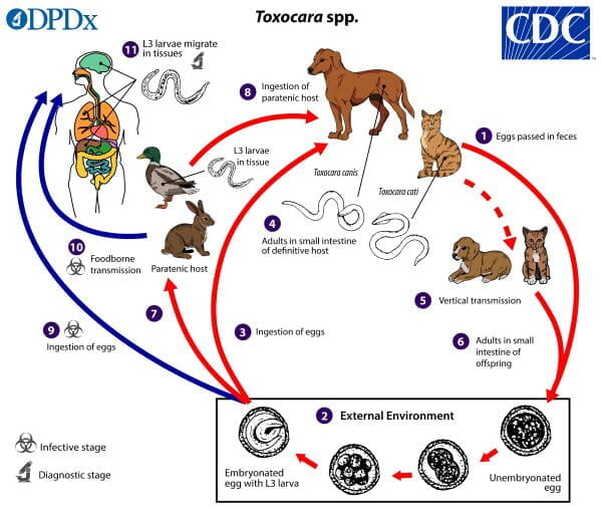|
Summer is in full swing - heat, BBQs, pool days, relaxing - what's not to like?
Summer is also fun for dogs and cats, but there are some summer hazards that I want to highlight so that you can stay safe, sane, and OUT of the vet hospital this summer! (ain't nobody got time or money for that...so let's prevent accidents!) In this blog post I'll be sharing my top 7 seven summer safety tips. 1. Never Leave Your Pet Alone in a Hot Car. Despite widespread media coverage, hundreds of dogs and cats left in cars perish in heat-related deaths during the summer. According to the AVMA, the temperature inside a car can increase by 20 degrees in 10 minutes, 30 degrees in 20 minutes, and after 60 minutes the temperature can rise by more than 40 degrees. Furthermore, a number of states, counties, and municipalities are making it illegal to leave a pet inside a locked car, and allowing Good Samaritans and police to take drastic measures, such as breaking car windows, to free pets from hot cars. While heat stroke can be fatal, what you might not know is that even heat stress is hard on a pet's internal organs and can create problems down the road that can, you guessed it, cost you money and shorten your pet's life. When it comes to leaving pets unsupervised inside cars, for potential legal and health reasons, the best option is to not do it. If you cannot take the dog with them inside when they are out and about, leave the pet at home...unless you have a Tesla that has a/c that runs while the car is off (which is very cool, especially if you live in Phoenix, where the sun literally touches the earth...)
2. Protect Your Pet Against Parasites.

Summer means outdoor time, hiking, nature, and fun with pets in NATURE! Ah yes, we love nature, but we don't love all the exposure to intestinal parasitic eggs and hungry fleas and ticks. It is important to keep pests out of and off of pets by using external and internal parasite control. Parasite control not only protects the pets, it also protects against parasites that can infected people, like roundworms and hookworms. For peace of mind, use products that your veterinarian recommends. Pro tip: Most heart worm prevention contains dewormer for many intestinal parasites as well, so you get full spectrum worm protection - YEAH! 3. Noise Phobias are Real Late June and early July can be torture for pet guardians of dogs that are scared of fireworks. Signs of noise phobia/aversion can include:
Fortunately, there are lots of ways to calm pets, including prescription medications and at-home remedies, including:
If nothing is helping and you need help, schedule an appointment (can be by phone or zoom) with a behaviorist or your local veterinarian - they can help you develop multiple strategies that complement each other to help your pet stay calm and safe. 
4. Hot asphalt and concrete will burn paw pads.
Asphalt and cement can be 40-60 degrees hotter than the surrounding air temperature, meaning that if the temperature is 100 degrees, the pavement could be 150 degrees or hotter. Asphalt heated by the sun to 135 can fry a dog’s paws in seconds, and air temperature is not a good indicator of ground temperature. A good ‘rule of paw’ is to test pavement by pressing your own bare feet or hands for 10 seconds on the pavement. If it is too hot for you, then it is too hot for your dog - find a different, cooler way to get your daily exercise, or go for a walk on soft surfaces like dirt trails or grass. Boots aren't recommended because dogs cool themselves through their paws. 5. Exercise during the coolest part of the day. It boggles my mind to see people out jogging with their dogs in the heat of the day, but yet it still happens. Even walks in the hot sun for smush faced dogs can be torture and downright dangerous. Most times people just don’t understand that their dogs aren’t having a good time, or that it can be really bad for their dog’s health. If your dog is panting hard, laying down, dragging behind, or seeking shade then they are toooooo hot. Dogs and cats aren't great at cooling themselves, and heat stroke can be life threatening, so it is important to know the signs of heat stroke, and what to do when you notice the signs. In addition, when it is hot, it is important to provide ways for your pet to cool themselves, and not take brachycephalic (smushed faced) dogs out for exercise during the heat of the day (warmer than 80 degrees F), as they are even less able to cool themselves. Check below for some excellent cooling products to try with your dog. 
6. Check your dog for foxtails after they play in grass.
AH THE DREADED FOXTAIL! Unless you have experienced the drama and expense of a foxtail getting stuck somewhere in your dog, it is highly unlikely that you know about this summer danger. Foxtails are grass seeds that have a barb on one end, and fanned out fibers on the other end. These foxtails get caught EVERYWHERE on dogs, but especially in between toes, up noses, in ears, and in eyes. Always check your dog for foxtails after they have been out around grasses that are going to seed (July-August in most areas), especially in between toes. If your dog is licking their paw excessively, has a swelling or hole that is draining pus in between the toes, then get your dog checked by a vet asap, as these foxtails can break up and be really hard to find the longer they are under the skin. Like...really. For long and medium hair breeds, ask your groomer do a ‘foxtail’ cut on the feet - this trims hairs that can trap and obscure foxtail awns, making it easier for you or your dog to remove them. 7. Ear and Skin Infections are more common in summer and fall. Skin and ear problems due to seasonal grass and tree pollen allergies represents a large percentage of daily appointments in late spring, summer, and early fall. If your dog has seasonal allergies, get started with antihistamines and other control measures early to minimize symptoms and itchiness. Not sure how to control seasonal allergies? Talk to your vet, and read this blog post I wrote about everything pet parents need to know about skin infections. Ear infections due to seasonal allergies also tend to flair up during the summer. Ear infections also increase because dogs are swimming - and they can get 'swimmer's ear' just like people do. If your dog is predisposed to developing ear infections, clean their ears 1-2 a week with a high quality ear cleaner, like this one that I recommend from Life's Abundance. Alternatively, you can make your own at home with a 1:1 solution of white vinegar and rubbing alcohol - just a few drops in each ear will dry and acidify the ear, making it inhospitable to yeast and bacteria. Do NOT use a homemade rinse if your pet shows signs of ear infections (excessive scratching, redness, discharge, odor) - instead, take them to the vet for treatment. What are your recommendations for staying cool and healthy with your pet during the summer? Share your wisdom with us in the comment section below, and check out the summer products I recommend for pets! xoxo Dr. Sarah Cooling Products for Dogs:
Ear and Skin Care Products:Calming Products:
Disclosure: This newsletter contains affiliate links, which means that Dr. Wooten may earn a small commission at no extra cost to you if you make a purchase using these links. This helps support her work and allows her to continue providing valuable pet health care information to her audience. Dr. Wooten only recommends products she believes in and trusts, so you can feel confident knowing that any purchase made through these links meets her high standards. Thank you for supporting Dr. Wooten and her mission to educate and empower pet owners and veterinary professionals.
0 Comments
Your comment will be posted after it is approved.
Leave a Reply. |
AuthorDr. Sarah Wooten is a well known international influencer in the veterinary and animal health care spaces. She has 16 years experience in private practice and over 10 years experience in veterinary media work, and is a certified veterinary journalist. Archives
October 2023
Categories |
The information provided by Sarah J. Wooten, DVM, Inc. (https://www.drsarahwooten.com/ (the our mobile application our mobile application our mobile application THE SITE OR OUR MOBILE APPLICATION THE SITE AND OUR MOBILE APPLICATION THE SITE AND OUR MOBILE APPLICATION THE SITE AND OUR MOBILE APPLICATION
AFFILIATES DISCLAIMER
Clickbank
ShareASale
We are a participant in the Amazon Services LLC Associates Program, an affiliate advertising program designed to provide a means for us to earn advertising fees by linking to Amazon.com and affiliated websites.
TESTIMONIALS DISCLAIMER
The Site may contain testimonials by users of our products and/or services. These testimonials reflect the real-life experiences and opinions of such users. However, the experiences are personal to those particular users, and may not necessarily be representative of all users of our products and/or services. We do not claim, and you should not assume, that all users will have the same experiences. YOUR INDIVIDUAL RESULTS MAY VARY.
The testimonials on the Site are submitted in various forms such as text, audio and/or video, and are reviewed by us before being posted. They appear on the Site verbatim as given by the users, except for the correction of grammar or typing errors. Some testimonials may have been shortened for the sake of brevity where the full testimonial contained extraneous information not relevant to the general public.
The views and opinions contained in the testimonials belong solely to the individual user and do not reflect our views and opinions. We are not affiliated with users who provide testimonials, and users are not paid or otherwise compensated for their testimonials.
The testimonials on the Site are not intended, nor should
they be construed, as claims that our products and/or services can be used to
diagnose, treat, mitigate, cure, prevent, or otherwise be used for any disease
or medical condition. No testimonials have been clinically proven or evaluated.
This disclaimer was created using Termly's Disclaimer Generator.

 Figo Pet Insurance
Figo Pet Insurance


 RSS Feed
RSS Feed